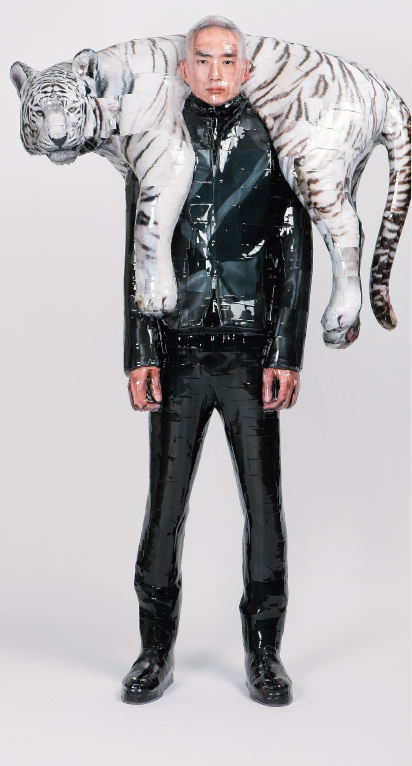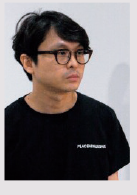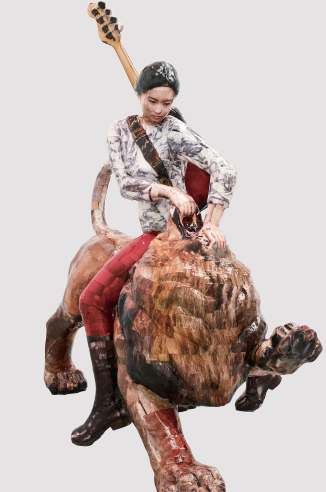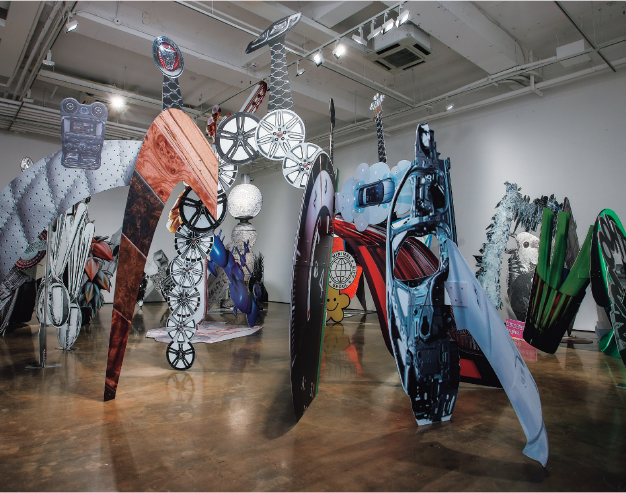
“Blouson & Albino”
Gwon O-sang, 2016. C-print, mixed media, 195 × 47 × 125 cm.
The Artist on His Work
My work differs a little from traditional photography. First, I take photographs of a model from head to toe, section by section, from diverse angles. I carve a life-size statue in Isopink (extruded polystyrene foam) and attach the photographs onto it one by one. In 1998, when I released “Deodorant Type,” produced in this method, people called it a “photo-sculpture.” I always wondered, “Why should a sculpture be so heavy, carved from stone or molded in bronze?” I wanted to make something light, veering away from conventional sculpting techniques, so I decided to combine photography and sculpture. From then on, my fundamental question as an artist has been: What is sculpture? How can I present it in a progressive way?

Timeline
· Born in 1974 in Seoul
· BFA and MFA in Sculpture, Hongik University
·Group exhibitions “Peppermint Candy: Contemporary Art from Korea” (Museo de Arte Contemporáneo de Santiago, Chile, 2007; Museo Nacional de Bellas Artes, Buenos Aires, Argentina, 2008; National Museum of Modern and Contemporary Art, Gwacheon, Korea, 2009); “Aspects of Korean Contemporary Photography: 1999-2008” (National Taiwan Museum of Fine Arts, 2010); “Tech 4 Change” (Vestfossen Kunstlaboratorium, Norway, 2015)
·Solo exhibitions “New Structure and Relief” (Arario Gallery Seoul, 2016); “The Sculpture” (Arario Gallery Shanghai, 2016)
· His works are in the collections of the Leeum, Samsung Museum of Art; the Singapore Art Museum; the Asano Curatorial Institute in Japan; and the Zabludowicz Collection and Universal Music UK in London.

“Fender”
Gwon O-sang, 2012. C-print, mixed media,
207 × 194 × 110 cm.

“New Structure and Relief”
Gwon O-sang, 2016.
(Installed at Seoul ARARIO GALLERY)